5.241. max_increasing_slope
| DESCRIPTION | LINKS | AUTOMATON |
- Origin
Motivated by time series.
- Constraint
- Arguments
- Restrictions
- Purpose
Given a sequence of variables , sets to 0 if , otherwise sets to .
- Example
-
The first constraint holds since the sequence contains two increasing subsequences and and the maximum slope is equal to as shown on Figure 5.241.1.
Figure 5.241.1. Illustration of the first example of the Example slot: a sequence of nine variables , , , , , , , , respectively fixed to values 1, 1, 5, 8, 6, 2, 2, 1, 2 and the corresponding maximum slope on the strictly increasing subsequences and ()
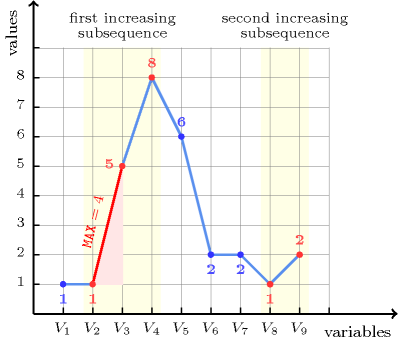
- Typical
- Symmetry
One and the same constant can be added to the attribute of all items of .
- Arg. properties
Functional dependency: determined by .
- Usage
Getting the maximum slope over the increasing sequences of time series.
- Counting
-
Length () 2 3 4 5 6 7 8 Solutions 9 64 625 7776 117649 2097152 43046721 Number of solutions for : domains
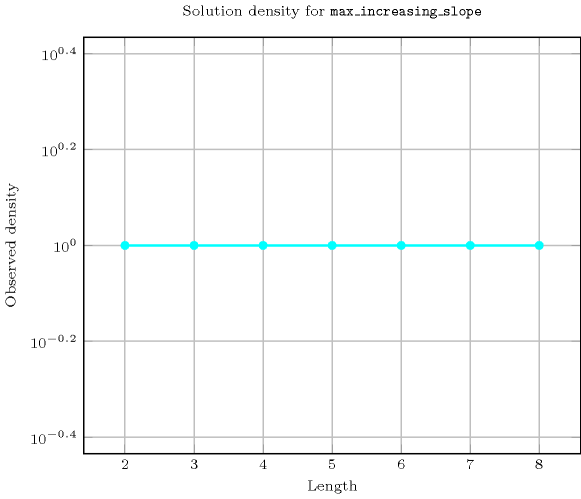
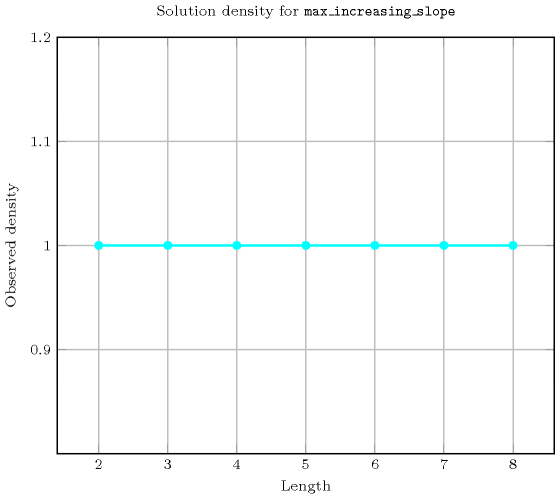
Length () 2 3 4 5 6 7 8 Total 9 64 625 7776 117649 2097152 43046721 Parameter value 0 6 20 70 252 924 3432 12870 1 2 20 151 1036 6828 44220 284405 2 1 16 188 1952 19200 183304 1721425 3 - 8 142 2106 29035 380116 4847301 4 - - 74 1584 28266 483840 8021350 5 - - - 846 21684 457632 9208124 6 - - - - 11712 353088 8654931 7 - - - - - 191520 6673834 8 - - - - - - 3622481 Solution count for : domains
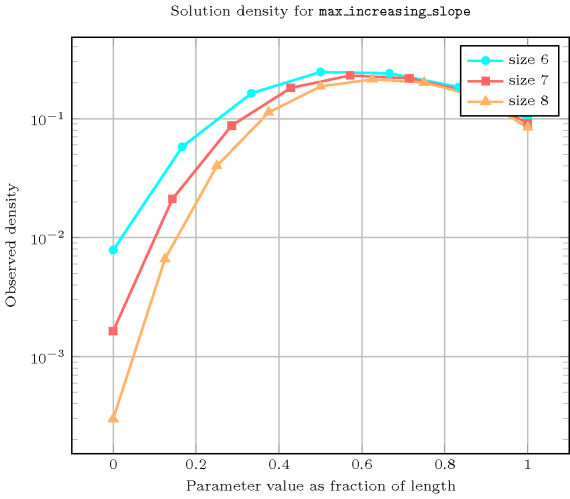
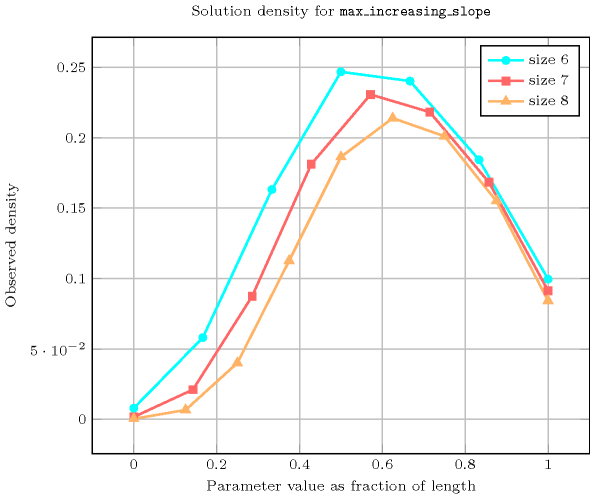
- Keywords
characteristic of a constraint: automaton, automaton with counters.
combinatorial object: sequence.
constraint arguments: reverse of a constraint, pure functional dependency.
- Cond. implications
- Automaton
Figure 5.241.2 depicts the automaton associated with the constraint. To each pair of consecutive variables of the collection corresponds a signature variable . The following signature constraint links , and : .
Figure 5.241.2. Automaton for the constraint and its glue matrix (note that the reverse of is )
